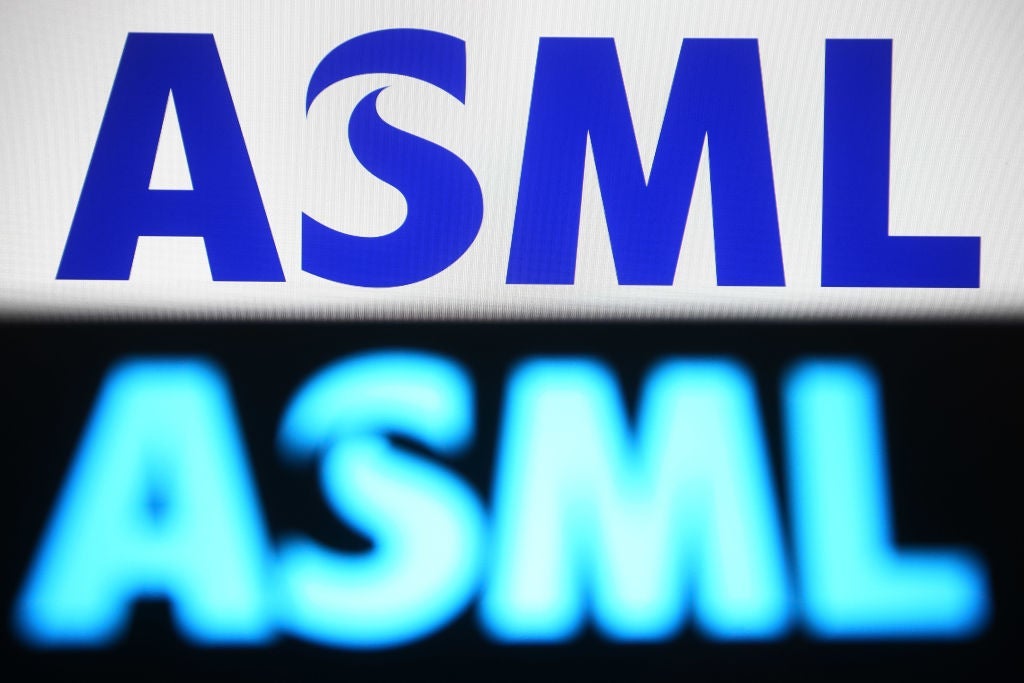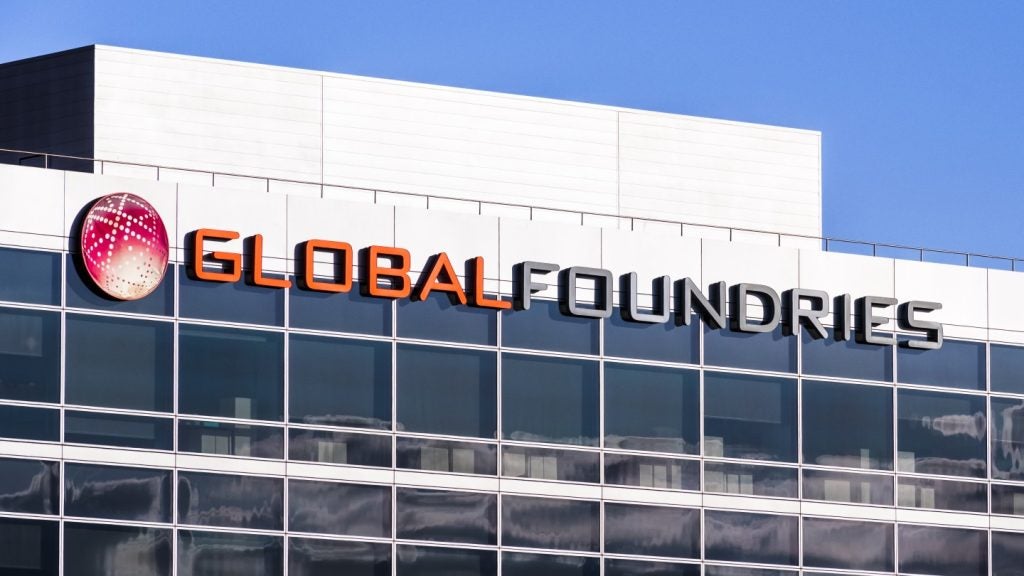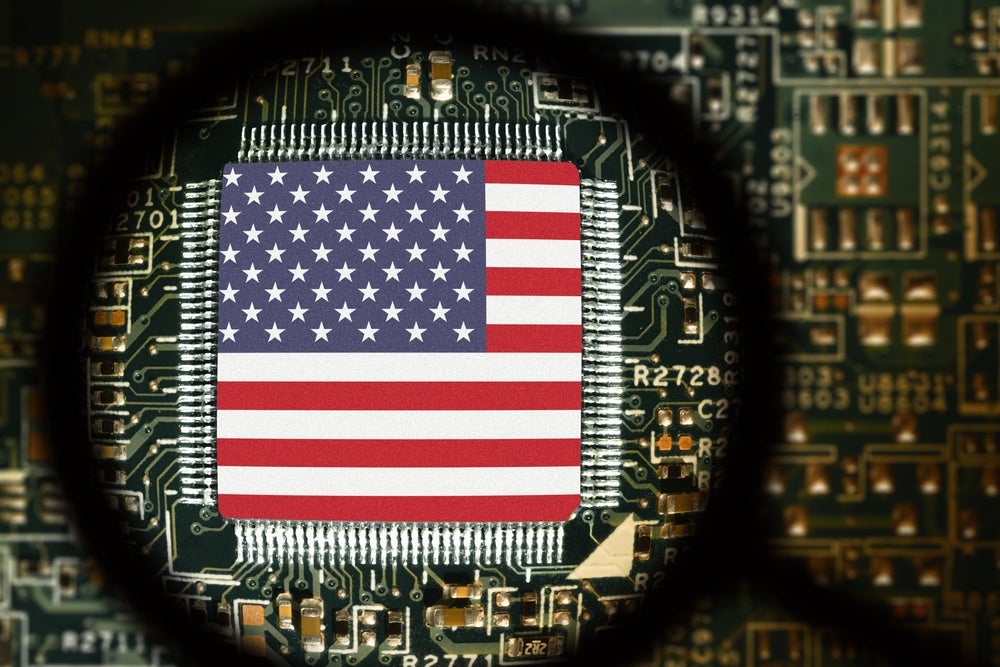
Dutch semiconductor equipment company ASML’s marketing strapline is: ‘The most important tech company you’ve never heard of’. Such a claim would usually be regarded as public relations hyperbole. In ASML’s case, it is more true than not. ASML stands for advanced semiconductor materials lithography. It is the only company in the world that makes extreme ultraviolet lithography (EUV) machines – the most sophisticated type of lithography equipment that is required to make every single advanced processor chip used in the world today.
These leading-edge chips are not only required for the manufacture of everything from laptops and phones to weapons and medical equipment, they are also foundational for many emerging technologies including AI, robotics and the internet of things – and demand for advanced chips is increasing exponentially. ASML’s 2022 second-quarter results showed the highest quarterly level of orders in the company’s history, with new orders rising to $8.39bn (€8.46bn) from $2.76bn during the same quarter in 2019.
While ASML’s global monopoly is not widely recognised, the truth always finds its way into financial markets. ASML’s stock price skyrocketed from $158 per share in December 2018 to $849 per share in September 2021 at the height of the global semiconductor supply chain squeeze (for context, Amazon’s stock price was about $176 per share during the same period). ASML’s stock price has since fallen to about $470 as of September 2022, reflecting more general market conditions.
GlobalData analyst Michael Orme characterises ASML as the semiconductor industry’s (perhaps even the world’s) “Atlas company”. That is to say it is the company bearing the heaviest burden for the whole semiconductor industry’s supply chain. ASML’s EUV lithography machines are currently the only way the world’s three big chipmakers – Taiwan’s TSMC, US company Intel and South Korea’s Samsung – can print leading-edge chips (these are the most advanced five-nanometre (nm) and 3nm chips), according to Orme.
ASML’s monopoly in the manufacture of EUV machines and the fact that these lithography machines are the most expensive step in making advanced chips are factors that place the company in an entirely unique position.
How did ASML reach a global semiconductor monopoly?
Research and development (R&D) and industry collaboration has played a big part in ASML’s rise to market dominance and historically enabled the company to outrun its main competitors, Nikon and Canon. Founded in 1984 as a joint venture between Dutch companies Advanced Semiconductor Materials International and Philips, the company has continued its expansion through collaboration with companies along the entire supply chain, most notably the world biggest chipmakers.
EUV machines took more than 15 years to develop, with significant financial help from chipmakers Intel, TSMC and Samsung, says Orme. The $140m machines involve more than 100,000 components, sourced by some 5,000 suppliers from across the world. “ASML is the only company that has been able to integrate these components into a fully functioning system,” adds Orme.
However, collaboration is not always present when it comes to leading-edge intellectual property (IP), according to Aidong Xu, head of semiconductor capability at management consultancy Cambridge Consultants, who believes the cost of EUV machines is not the most limiting factor when it comes to semiconductor innovation. ASML’s $185bn capital valuation and its association with the “big boys” of semiconductor manufacturing, as Xu puts it, means IP rather than funding is where the true keys to the industry lie.
Once IP is two years or three years old, collaboration is much more likely to happen as it is usually only cutting-edge IP that is being guarded so closely, according to Xu. High-value IP shifts the engine of innovation from funding to talent; the global skills base has become one of the real battlegrounds for competition in the area of EUV machines.
In this regard, Xu credits ASML’s long-standing ties with Europe’s Interuniversity Microelectronics Centre (IMEC) as the kind of collaboration that has fostered EUV expertise in Europe. IMEC was founded in Belgium the same year as ASML in 1984 and is the most advanced semiconductor research centre in Europe.
Both Europe and the US have the edge over China in terms of leading-edge skills and semiconductor development, according to Xu. While China is successful in attracting talent in all areas of tech, Xu says the country has failed to do the same for cutting-edge talent in semiconductors. “China is interesting because it may be the second or third country in the world for semiconductor manufacturing but not in leading-edge semiconductor technology… not yet,” he adds.
Going forward, Xu believes that ASML will eventually have to allow opportunities for other players in order to secure the global supply chain. “This hasn’t happened yet, but it will happen,” he says, adding: “It’s not healthy to have a solo supply.”
ASML sees a shift in FDI patterns
ASML is headquartered in Veldhoven in the Brainport Eindhoven region of Brabant in the Netherlands, one of Europe’s top tech hubs. The company has around 32,000 employees worldwide across 60 locations and comprising 120 nationalities. The complexity of building EUV machines means that the company relies on a network of more than 4,600 tier one suppliers and has offices in Belgium, France, Germany, Hong Kong, Ireland, Israel, Italy, Japan, mainland China, Malaysia, the Netherlands, Singapore, South Korea, Taiwan, the UK and the US.
ASML has 16 primary R&D centres across the US, Europe and Asia. The largest R&D and manufacturing centre is located at the company’s headquarters in Veldhoven. Berlin is the company’s other European R&D and manufacturing site. ASML has nine significant locations in Asia compared with five in the US. Within Asia, the company has four centres in China, three in Taiwan and one each in Japan and South Korea. Hong Kong serves as the company’s regional headquarters, while Shenzhen is the company’s biggest Asian R&D centre for software and Linkou in Taiwan is the company’s largest overall Asian site.
The company’s largest US site and second-largest global R&D centre is located in Wilton, Connecticut. The company’s Silicon Valley centre is focused on software and R&D, its facility in San Diego specialises in the development of deep ultraviolet (DUV) and EUV machines, in addition to Chandler, Arizona and Hillsboro, Oregon, both of which serve as global customer support centre locations.
Investment Monitor’s FDI Company Database has registered three foreign direct investment (FDI) projects carried out by ASML in 2022 evenly spread across regions. with two workforce expansion projects in China and South Korea along with a $250m manufacturing facility expansion project in Wilton, Connecticut, which is expected to create 1,000 jobs over the next two years.
From October 2019 until July 2021, ASML’s FDI projects were all concentrated in Taiwan. At the height of the 2021 semiconductor supply chain squeeze it became clear that the chip industry as a whole must diversify geographically in order to mitigate future problems. From July 2021 onwards, ASML’s FDI projects were more geographically diversified and included three US projects, two in South Korea and one in China. Among these projects was a new R&D centre in San Jose announced in August 2021 and a new manufacturing plant in South Korea in May 2021.
Greenfield investment in semiconductor R&D and manufacturing is the kind of investment that promotion agencies across the world dream of: high-value, high-tech jobs and the economic development it brings to a region. Semiconductor chips are such an important component across all sectors that companies are looking to have a more regional presence than before in order to service ever-increasing demand, says Investment Monitor chief economist Glenn Barklie.
“AMSL’s geographic diversification is proof of this,” he adds. Although implementing new projects takes time and costs are high, the return on investment is likely to be even higher, adds Barklie. “There are also a relatively low number of players active in this industry, leading to the ability to barter for large incentives from governments,” he says.
ASML becomes a casualty of China-US tech wars
Government intervention can either help or hinder the industry depending upon a person’s perspective. Despite being a European company, ASML has not escaped being caught up in the crossfire of the US-China tech wars. Because ASML’s technology involves US IP, the company has been the victim of US ‘weaponisation’ of its IP against the Chinese tech threat, says Orme.
In late August 2022, the US Department of Commerce announced restrictions on exports to China of electronic design automation software used in the production of leading-edge chips. The department added seven entities to the Bureau of Industry and Security ‘entity list’ as part of the US government’s increased focus on enforcing export restrictions that target China. “ASML now cannot supply Chinese companies on the US Commerce Department’s ‘entity list’; notably China’s biggest foundry, SMIC, or of course Huawei with EUV machines,” says Orme.
The company may still provide its older-generation DUV machines to SMIC and other Chinese companies – but these machines are only used in the production of 14nm chips and above rather than advanced chips. Orme doesn’t rule out Washington also banning sales of DUV machines to China by including these on its entity list of Chinese companies. SMIC has recently acquired 47 DUV machines as a pre-emptive measure, adds Orme.
This may prove a significant challenge for ASML as around 20% of the company’s revenue is derived from its Chinese sales. In addition, there is an industry consensus that China will be by far the biggest semiconductor market in the world by 2030. Indeed, GlobalData Thematic Data reports that China will become the world’s leading semiconductor superpower on the basis of its growing domestic demand for chips. The semiconductor industry will double in size to more than $1trn by 2030, and China will account for approximately 60% of that growth, according to the Semiconductor Industry Association and Boston Consulting Group.
ASML is a Dutch company and the Dutch government is obeying Washington diktats, much to the chagrin of ASML senior management, according to Orme. This sets Washington ‘hard hats’ on a clear collision course with a global semiconductor industry dependent on Chinese semiconductor sales – more than 30% on average for US and European chipmakers. “There will be blood on the walls if the ‘weaponisation’ by US lawmakers intensifies,” adds Orme.
What is next for ASML?
Prototype EUV machines, which are said to be pushing the boundaries of physics, are estimated to cost in the region of $300m to manufacture. Meanwhile, worldwide semiconductor revenue grew 25.1% during 2021 to $583.5bn, according to Gartner. As manufacturing costs increase, expertise becomes scarce and market demand for advanced semiconductors booms, the future landscape looks unsettling to say the least.
EUV machines are currently the only way to print miniscule designs on chips, and if Moore’s law bears out, some believe the industry is akin to a racing car headed towards a brick wall at high speed (Moore’s law being the theory that the number of transistors on microchips will double every two years). This scenario places ASML firmly in the position of potential saviour.







